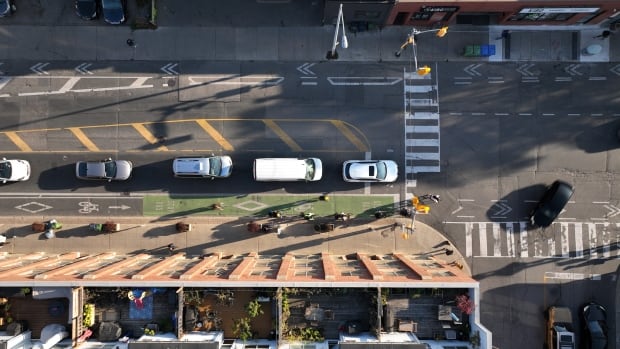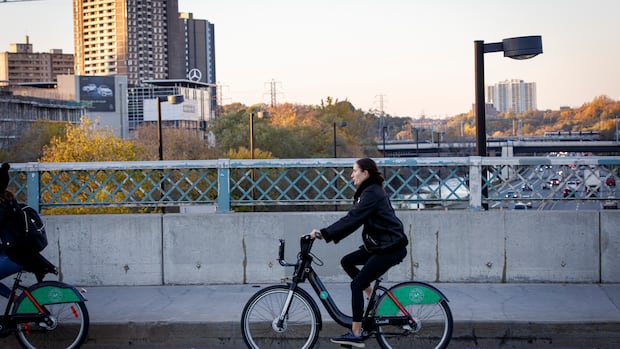Ontario’s transportation minister says bike lanes on three major Toronto streets could be removed entirely, not just in sections, under a proposed regulation.
The Progressive Conservative government tabled a bill last week that would require municipalities to ask the province for permission to install bike lanes when they would remove a lane of vehicle traffic. The government has said these bike lanes are contributing to gridlock, a claim critics have disputed.
The province also announced it was moving faster to review and remove bike lanes on sections of Bloor Street, Yonge Street and University Avenue through a proposed new rule.
Speaking to reporters Friday, Transportation Minister Prabmeet Sarkaria said if the regulation goes through, the province could go much further.
“[All] sections are up for removal,” Sarkaria said, adding that the province will have to review where sections would be replaced with lanes for motor vehicles.
“But the entire street, whether it be Yonge Street, whether it be Bloor, whether it be University, can be removed.”
He said the province has heard complaints of bike lanes on these three streets contributing to traffic problems for motor vehicles and hurting businesses.
Many local businesses along these streets have voiced support for the bike lanes. The Bloor-Annex Business Improvement Area, for instance, put out a release last week saying monthly customer spending had increased since lanes were installed along Bloor Street, and removing them would be “disastrous for the area.”
“Are we building highways or are we building main streets?” BIA general manager Brian Burchell said in the release. “Because highways don’t encourage main street economic activity.”
If the regulation goes forward, Sarkaria said the province would choose which lanes to remove from the three streets following a review.
The proposed regulation is posted for public comment until Nov. 20.
Toronto Mayor Olivia Chow has said the city opposes the province’s plan to remove bike lanes.
Speaking to reporters Friday, she said that “the province’s plan is arbitrary and not based on any evidence” that bike lanes add to congestion.
Chow said the installation of these bike lanes was preceded by years of study and consultation before going through city council votes. Ripping them up would be costly and do nothing to help with the city’s traffic issues, she said.
Chow said the city is happy to share its data and research with the province.
“The city’s preference is always to work collaboratively, and based on data and evidence,” Chow said. “But the way they’re rushing it through, it’s making it quite difficult.”
Ontario’s transportation minister says bike lanes on three major Toronto streets could be removed entirely under a proposed regulation. The city’s mayor says decisions on bike lanes were made following years of study and consultation. CBC’s Lorenda Reddekopp has more.
Sarkaria said Friday that only 1.2 per cent of people use those bike lanes to commute to work, compared with 70 per cent who drive, and the lanes are taking away nearly half of the infrastructure on those roads, making commutes longer for drivers. He said the province hears daily complaints about the lanes, and that is why the government is moving “as quickly as possible” to review those lanes specifically.
The city says data suggests use of bike lanes on Yonge, Bloor and University have increased in both the winter and summer since they were installed. Research also suggests dedicated bike lanes ease congestion, reduce emissions and increase business for street-level shops. Construction on these streets is the main contributor to congestion issues on those streets, the city says.
Last week, hundreds of cyclists, joined by a few politicians, rallied outside Queen’s Park to oppose the province’s plans to increase its power to remove bike lanes in municipalities.



